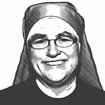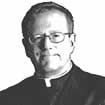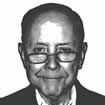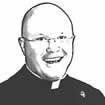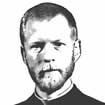
Culture
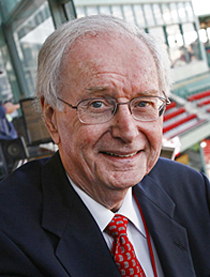
Flavin
A week ago in this space your humble correspondent prattled on at length about the Red Sox/Yankees playoff game of 1978, in my opinion the best baseball game I ever saw.
As luck would have it, I had the good fortune to moderate a panel discussion with old Red Sox and old Yankee players held less than 48 hours before baseball shut itself down due to the coronavirus. Representing the Yankees were Bucky Dent, Goose Gossage, Graig Nettles, and Mickey Rivers, all of whom played key roles in that game. On the Red Sox side were Luis Tiant, Bill Lee, Bernie Carbo, and Wade Boggs. Tiant and Lee were both on the '78 Red Sox, Carbo had been traded to Cleveland earlier that season, and Boggs, the baby of the group at age 61, didn't reach the majors until 1982. Needless to say, the playoff game was a major topic of discussion.
The event was held in Bonita Springs, Forida (just south of Fort Myers), under the sponsorship of the Ted Williams Museum. It was called "The Rivalry," and that's exactly what it was, especially in those days.
Dent, who had been in a frightful slump, hadn't even used his own bat that day of the big game. He'd borrowed one from Mickey Rivers, hoping to change his luck. When Bucky fouled a ball off his foot and required help from the Yankee trainer, Rivers noticed that the bat he'd borrowed had a crack in it so he sent the batboy out with another to replace it. When Dent finally got back into the box with his replacement Mickey Rivers model bat, he swung at the first pitch Mike Torrez threw. He said that he knew he'd hit the ball pretty well but didn't know it was over the wall until second base umpire Al Clark signalled that it was a home run. It certainly wouldn't have been out of the park if he'd hit it with a cracked bat. Dent recalled that a friend of his told him shortly after the homer that it would change his life. Bucky didn't believe him at the time but said that his friend was right. It's one of the iconic homers in baseball history and he'll always be remembered for it.
Rivers, in addition to providing the bat used by Dent, stole second base later in the same inning and was able to score on a double to left by Thurman Munson, a run without which New York would not have won that game.
Gossage was on the mound at the finish but had uncharacterstically given up two runs in the eighth and escaped by a whisker from being scored on again in the ninth. When it was mentioned that he didn't have his best stuff that day he was frank to admit that he was lucky he could throw the ball up to home plate. Walking in from the bullpen, he said he felt rubber-legged by the enormity of the situation. It was winner-take-all in baseball's most historic park between it's most historic rivals. He knew even then that it was a game of historic proportions.
He still sports his famous horseshoe shaped mustache, but it's now snow-white, not sand-colored like in his playing days. He was a fearsome presence on the mound back then and I expected to be intimidated by him when we met, after all I'd been intimidated by him in the old days -- and I was sitting up back in Section 15 back then -- but he turned out to be a gregarious fellow and was great company.
It was not unusual back in the '70s for brawls to break out between the Sox and Yanks -- real brawls, in which real haymakers were thrown, not just pushing and shoving.
In fact, in just such a fight in 1976, Graig Nettles, who made the final put out of the playoff game, broke Bill Lee's collarbone. The two teams had a passionate dislike for each other. I thought that instead of moderating a panel I'd be counting at the knockdowns, but time has a way of mellowing people -- even old Red Sox and Yankees -- and the former enemies have, over the years, developed a real affection for one another.
None of the old Red Sox on the panel actually participated in that playoff game. Luis Tiant on the day before had pitched a complete game two-hit shutout to force the playoff, so he wasn't available. Bill Lee was rested and ready but he could not stop himself from publicly belittling manager Don Zimmer ("The gerbil") and was buried deep in the manager's dog house. There was no way Lee was going to be used in that game.
Bernie Carbo had performed his heroics three years prior, in Game Six of the 1975 World Series, when he hit a three run homer with two outs in the bottom of the eighth to tie the score and set the scene for Pudge Fisk's 12th inning home run for the ages. Bernie, who had homered after almost striking out on the previous pitch, remembered that as he rounded third Pete Rose, who was playing the hot corner for the Cincinnati Reds in that epic see-saw game, hollered out to him, "Ain't this fun?"
Carbo, who back in these days led a wild and crazy life, announced that he has now been "clean and sober for 27 years." That led Lee, a born entertainer, to announce that he has been "clean and sober for 35 minutes."
It was left for Boggs to make the point that he has no sympathy for today's players who complain about having to face infield shifts. "Let them learn to hit the ball the other way," he said. Everyone else on the panel agreed with him.
Boggs was for some reason the most underappreciated player in Red Sox history. Year after year, he'd produce more than 200 hits and score more that 100 runs. In eight seasons with the Sox he compiled a batting average of .338, yet he never really won our affection as a player and not many people around here were sad to see him go when he signed with the Yankees in 1993. We knew he was a Hall of Famer but we never fell in love with him. Go figure.
It was a grand night, filled with memories and stories, and everyone had a terrific time, especially the old players.
- Dick Flavin is a New York Times bestselling author; the Boston Red Sox "Poet Laureate" and The Pilot's recently minted Sports' columnist.
Recent articles in the Culture & Events section
-
What is truth?Michael Reardon
-
The 75th anniversary of St. Ignatius of Loyola Church, Chestnut HillThomas Lester
-
The most important prayer you already knowLaura Kelly Fanucci
-
Two years after DobbsRussell Shaw
-
Scripture Reflection for July 21, 2024, Sixteenth Sunday in Ordinary TimeDeacon Greg Kandra






